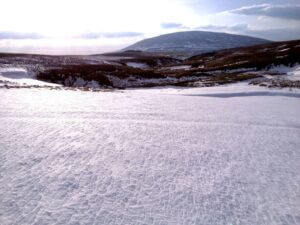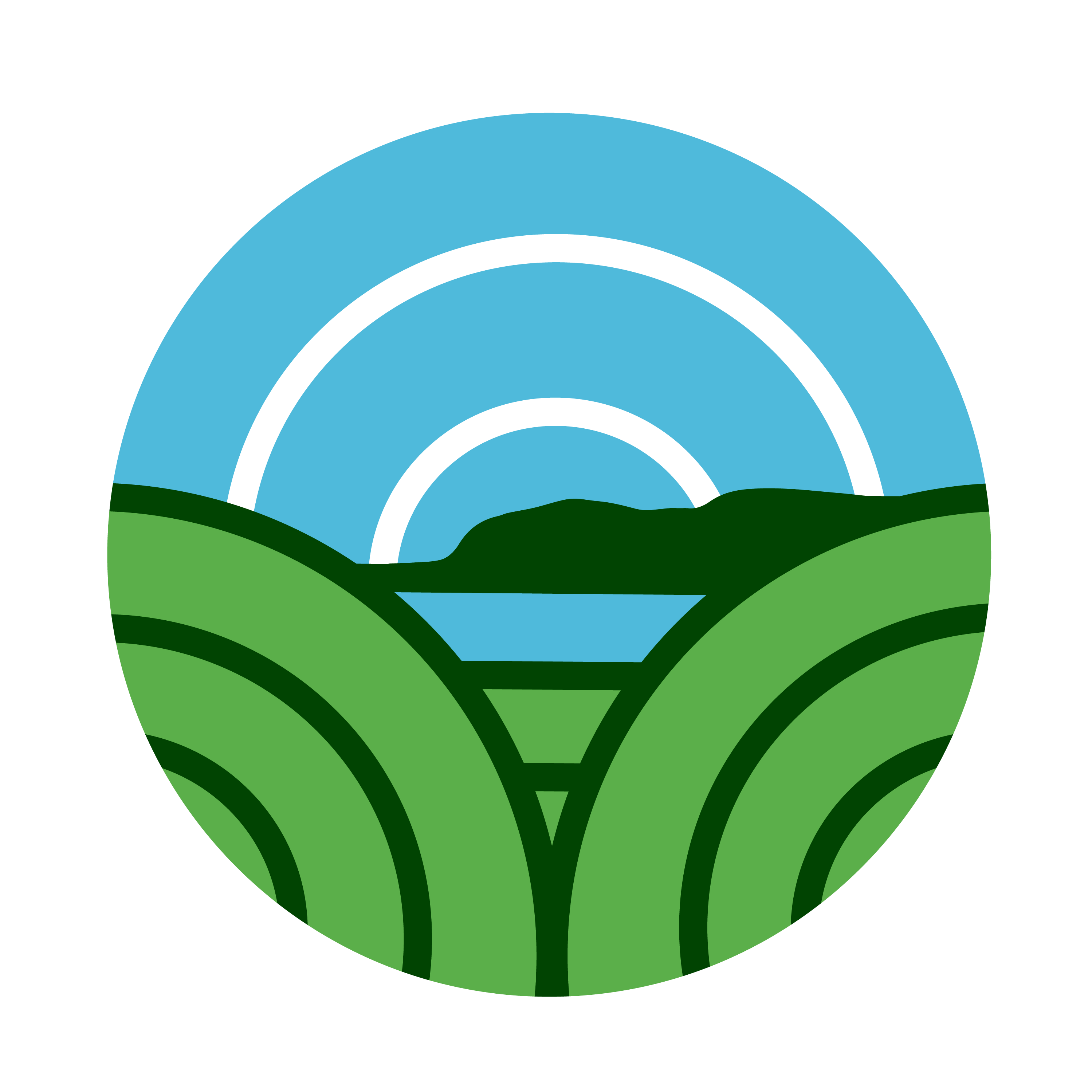Introduction
Glenshesk like the other Glens of Antrim can be a challenging environment, occasionally, throughout the seasons. When the forces of nature stir, they can wreak havoc on everyday life, particularly in this very isolated part of the Glens.
Earth:
Because much of the Glen is made up of a steep valley, heavy rain can lead to landslides on a grand scale. In recent years there have been two major landslides, one of the main Glenshesk Road at Broughmore (see Link to Report), and the other in November 1998 which caused a large part of the Inlet to slide into the Glenshesk River. Thankfully no one was hurt in the landslides, which could have caused serious harm, as both slides created considerable drops into the Glenshesk River!
The landslide on the Inlet, because of its scale, became a national headline and was featured not only in the local press but on both BBC NI and UTV television. The closure meant that not only could the local community in this isolated part of the Glens not travel anywhere, but livestock feed could not be transported across the Glen in either direction. After much deliberation, the Department of Agriculture stepped into the crisis and chartered two British Army helicopters to lift supplies into the farms, which landed on a field on Duncarbit Farm before being distributed.
The repair work to the Inlet was quite extensive, and the scheme for it was later used as a template for other such schemes, and was actually featured later as a case study, as part of a presentation at a major world conference in Hong Kong!

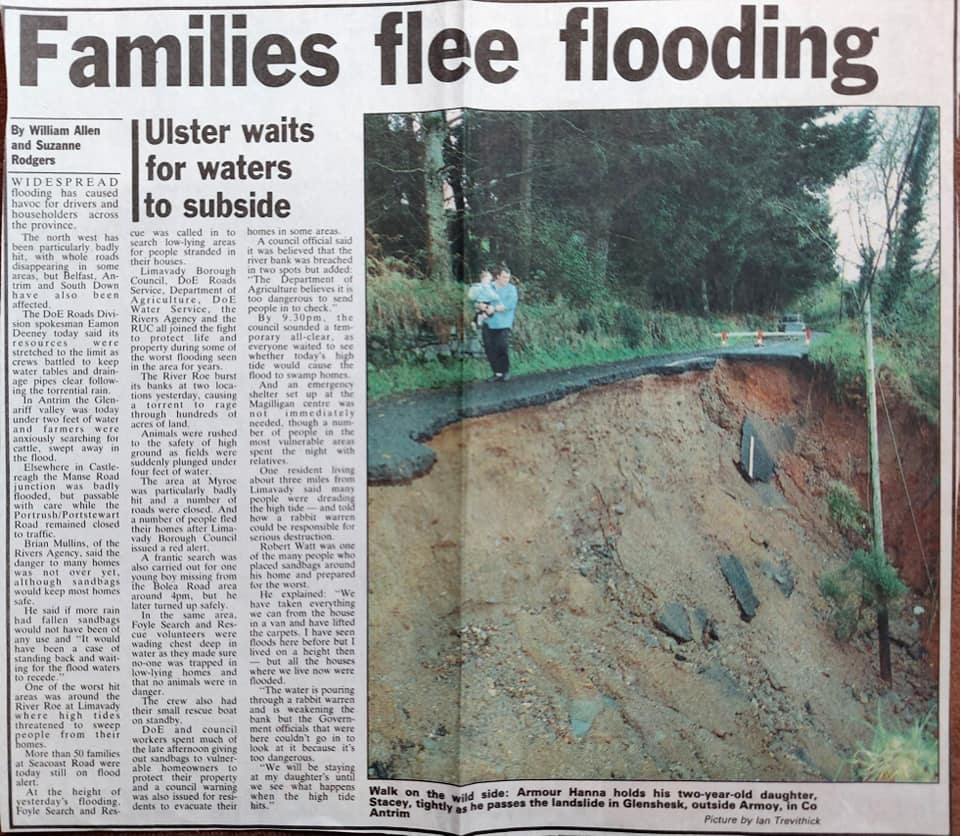
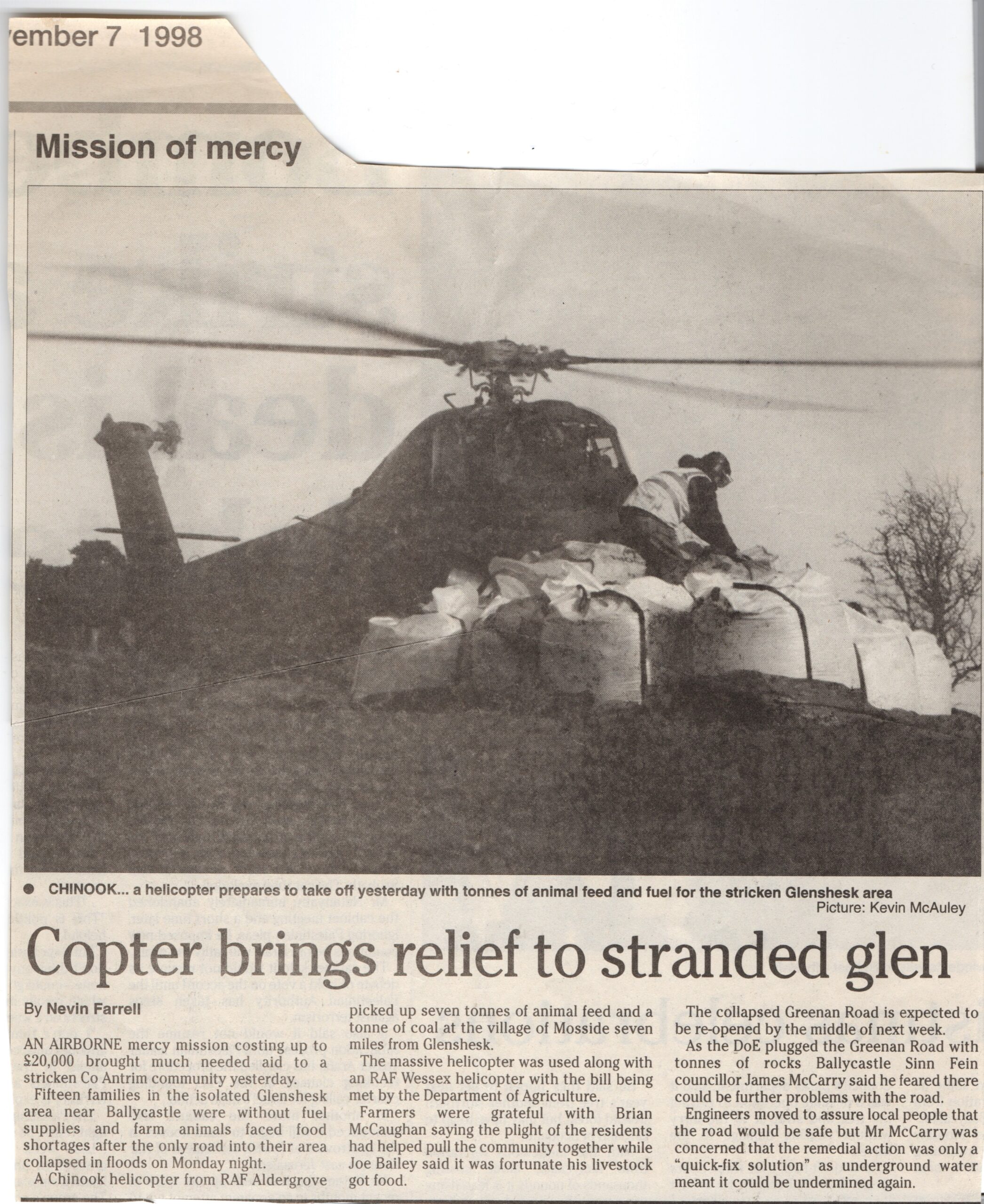

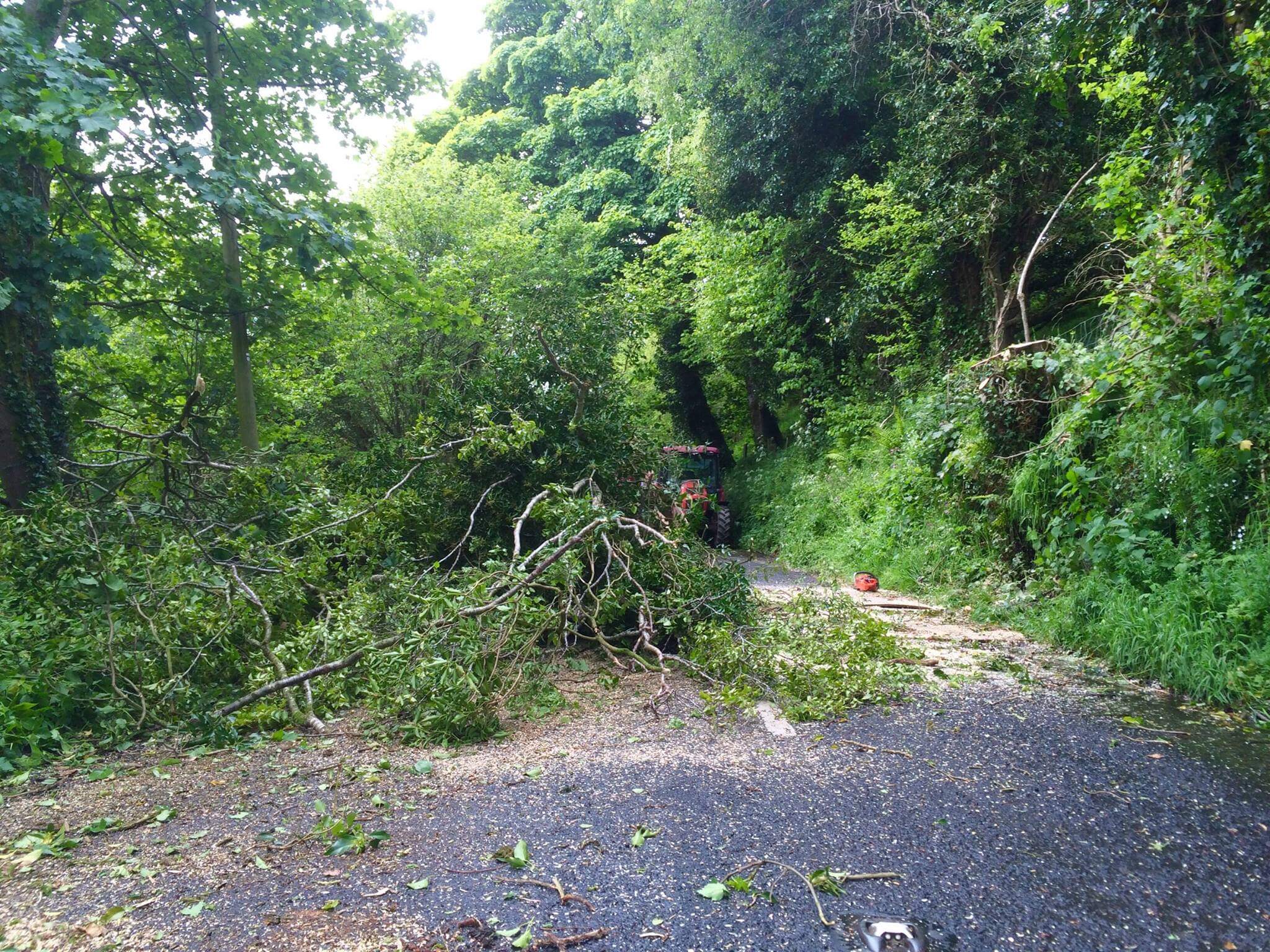
Wind:
As Glenshesk is quite exposed and heavily wooded along the main transport routes, heavy wind can often lead to frequent temporary road closures due to tree falls. Several times a year, trees do come down on the main road, and are normally cleared by the farmer who owns the land with the help of a chainsaw. As most of the electricity supply and telephone cables are above ground, heady winds can lead to frequent electricity cuts and loss of communications. Many farms in the Glen have backup generators to provide emergency power when required.
Fire:
Thankfully, Glenshesk doesn’t suffer too much from fires, but there has been issue’s in the past when farmers burnt heather in the mountain ranges to encourage new green heather growth for sheep. On the odd occasion, the fires can get out of control, and the fire brigade are called, so that the fire can be kept under control, even more so as many of the Glenshesk mountain ranges border on large forests like Ballypatrick Forest. The burning of heather has decreased significantly, particularly in light of the way it might negatively affect the local wildlife. The picture opposite is of an old fire shovel which had been placed near a heather mountain range in Glenshesk

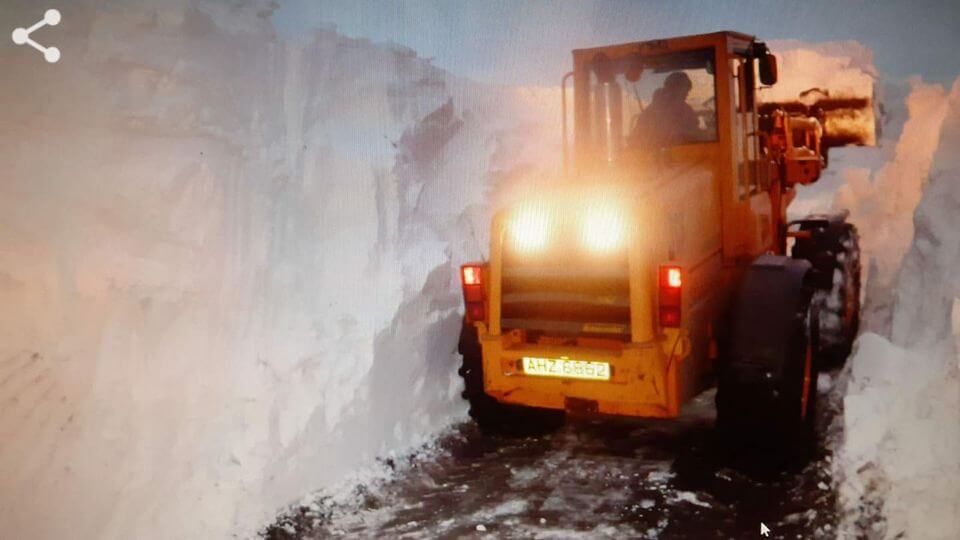

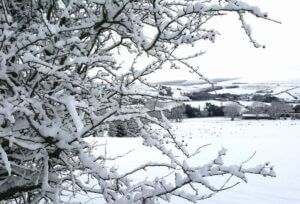
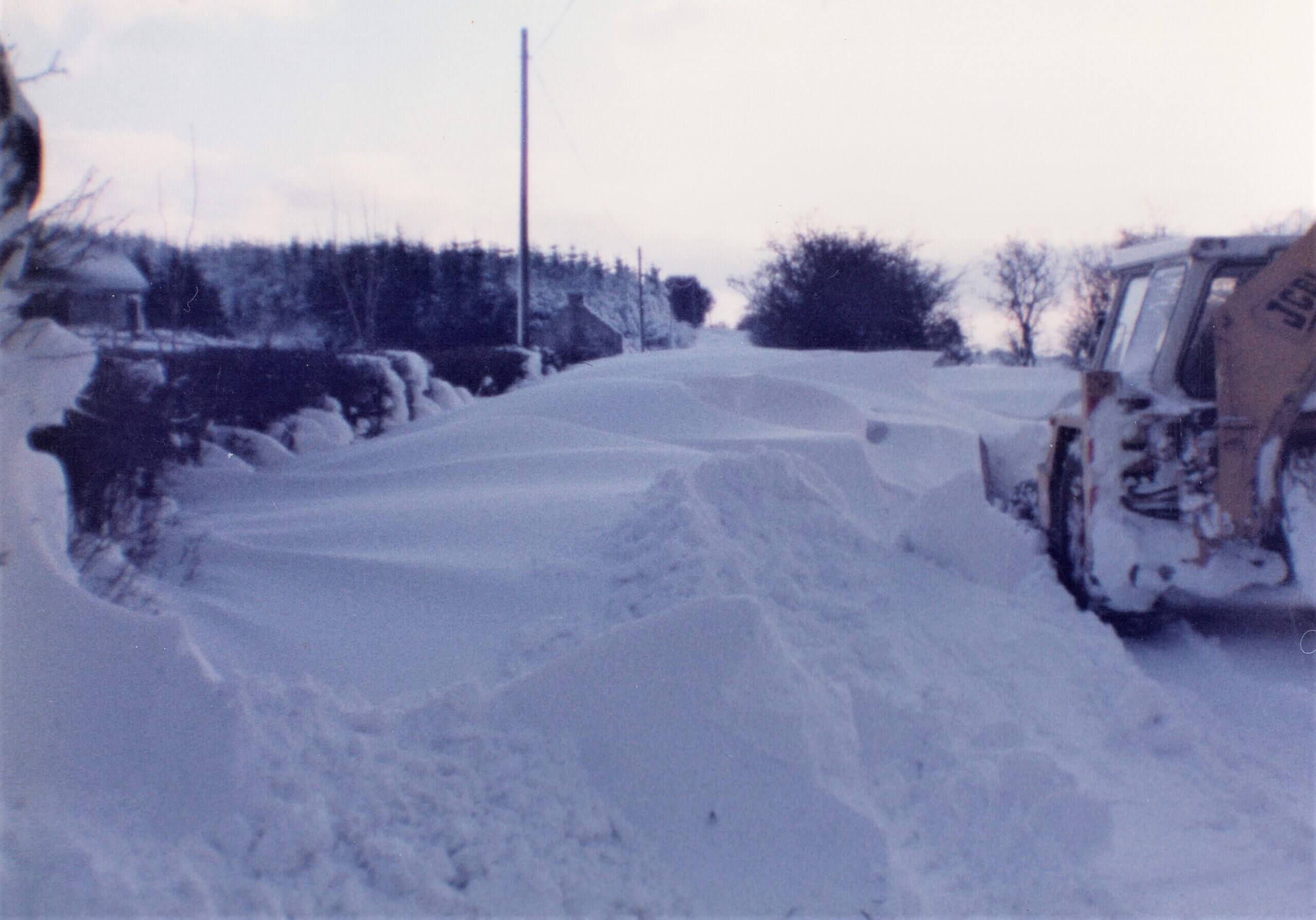
Ice:
As the farms in Glenshesk are high above sea level, and are quite exposed, they can suffer from the heaviest of snowfalls in the North of Ireland. When much of N.Ireland can be paralysed by a few centimetres of snow, Glenshesk will often have several feet! This was most evident in 2013 when farmers appeared in the local media concerned about losing a few sheep, when several farmers in Glenshesk lost sheep numbering in the hundreds, many in lamb! On that occasion many sheep were up in the mountains and the snow came very quickly, catching many farmers by surprise. Many of the smaller valleys were completely filled with snow, echoing the great snowfall of 1947.
In 1947 the snow lay for over a month, completely covering many of the smaller valleys; many sheep at the end of it were very malnourished. Kevin McCaughan from Duncarbit stated in recent years that the only one who had any fun during it was Paddy McBride from Loughan, who was able to shoot a lot of rabbits in the snow; I wonder if rabbit stew was on the menu then! It’s been a while since the Glen has had really heavy snow, however some enterprising youth of Glenshesk are now using snowfalls for skiing and snowboarding!

